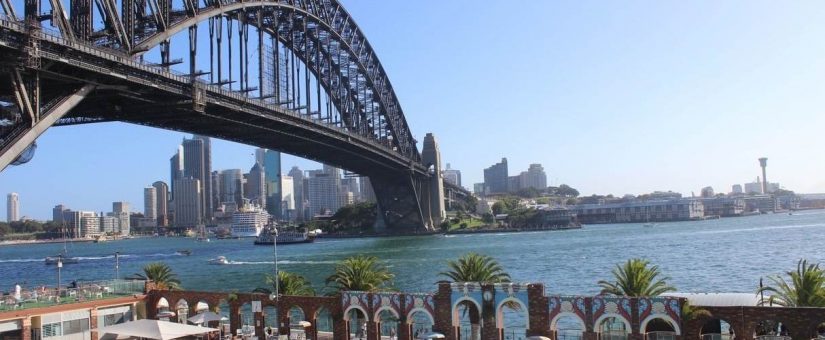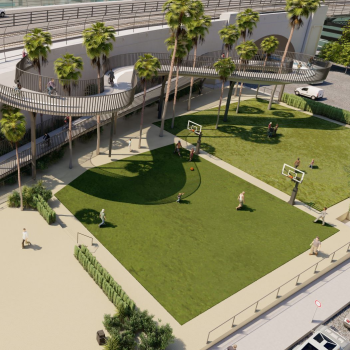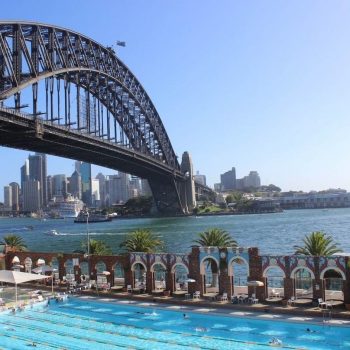
Newsletter 64 – North Sydney Olympic Pool
- Posted by IanMuttonAdmin
- On June 19, 2024
North Sydney’s Olympic Pool – Why so long to build? Why so expensive?
Our North Sydney Olympic Pool was built in 1936; the rebuild raised 4 questions
- Did it need to be “replaced”?
- If so, what should it be replaced with?
- Were the “right” contracts for design and construction of the replacement put in place?
- Have the contracts been properly managed?
Question 1. Did the pool need to be replaced?
In 2007 the pool was found to be leaking.
- So great was the leaking that it was decided to line it with vinyl
- The vinyl liner had a 10-year life expectancy.
- At the time engineers raised concerns that the leaking may be impacting on the structural integrity of the pool shell and surrounds supporting the grandstand.
In 2017 the vinyl liner:
- Was splitting at the seams and detaching from the pool shell.
- Tenders were called to replace the liner; no bids were received.
In 2018 cores were taken from the pool’s concrete surrounds and analysed. The analysis established that the structural integrity of the grandstand had been compromised to the point where the number of people using the grandstand at any time should be reduced to 75% of the designed capacity (i.e. from 2000 to 1,500 people).
In 2019 the analysis was reviewed; the engineers recommended that the capacity be further reduced from 1,500 to 900, less than half the original capacity.
Meanwhile the leaking was continuing raising concerns that it was scouring the fill beneath the pool shell. The point was made that any loss of support would further degrade the integrity of the pool shell.
In summary – the pool and grandstand had reached the end of their usable lives.
Question 2. Replace with what?
Consideration of the North Sydney Olympic Pool (NSOP) Redevelopment commenced in 2013, with scoping studies complete in 2015, resulting in 6 options. Throughout 2016 and 2017 extensive community consultation was conducted into the options. The options ranged:
- from the replacement of the original 50m pool to an aquatic centre covering the whole site including the 25 m pool and paddle pool.
- with cost estimates ranging from $28M to $77m.
In 2017 Council resolved to proceed with option 2 (i.e. the second lowest cost) with a pre-DA capital costing of $28m.
- Option 2 provided for the replacement of the pool and the refurbishment of the amenity areas.
By the start of 2019 it was apparent that the grandstand also needed to be replaced.
In March 2019 Council resolved to progress the completion of the alternative option 2(b)
- Option 2(b) was, simply put, option 2 with the addition of the replacement of the grandstand.
The Development Application was approved in December 2020; the budget allocation was $63.9M.
In summary, the pools, grandstand and associated facilities were to be replaced.
Question 3. Were the “right” contracts put in place?
In 2018 Council put out a tender for the design of the pool. A number of bids were received. A contract was awarded to the architectural firm that had been associated with the project since 2014
In 2020 invitation to tender for the replacement of the pool and grandstand.
The contract the subject of the 2020 tender was based on the AS4000 (AS4000, formally known as the Australian Standard AS 4000-1997 General Conditions of Contract) which is one of the most widely used forms of head contract for construction projects in Australia). It was reworked with the focus on the pool and grandstand. The reworking was carried out with the advice of a leading construction law firm.
All bids received were ranked, and negotiations had with the top-ranking bidder which led to the awarding of a contract to it. Importantly, the process was positively assessed by a firm with expertise in carrying out probity assessments.
The contract provided for the completion of the NSOP project in November 2022.
The design contract was not novated to the builder, leaving Council responsible for the management of both the design and construction contracts and, in particular, the interface between the two.
The governance structure put in place to meet the “requirements of the construction phase” have not changed, that is, Council is still responsible for management of both design and construction.
In summary, while standard contracts were put in place, responsibility for the supervision and management of the contractors was with Council. Council’s ability to carry out this task is dealt with below.
Question 4. Have the contracts put in place been well managed?
Important to keep in mind that a cause for increases in costs is changes in scope (design and changes to facilities – e.g. that Council would fit out and operate the gymnasium rather than lease it to an independent operator).
Council has a traditional reporting structure.
- The collective wisdom of the executive is transmitted through the CEO to the Mayor.
- The Mayor, by setting Council meeting agendas, causes Councilors to be informed and empowers them to give direction and take decisions.
The present Council was elected in December 2021. Since that election staff changes have seen:
- 3 General Managers/CEOs
- 3 Directors responsible for the pool project
At the time of the election of the present Council in December 2021.
- Approved contract variations were reported to total less than $200,000.
- Unapproved claims for variations (at values attributed by council staff) were reported to be within the amount allowed for contingencies.
Almost a year later, in October 2022:
- Mayor Baker noted the “project was not meeting the projected timing and cost due to significant delays and variations under the building contract and moved that Council engage a suitably qualified independent person to undertake a thorough review of all aspects of the project and prepare a report to Council.”
- PricewaterhouseCoopers (PWC) was engaged to undertake the review.
PWC’s review was delivered in December 2022; it has, in part been released by Council; the released part reported:
- When the construction contract was signed, the design documentation was incomplete and site investigations were ongoing, leading to early cost variations and delay.
- Council had limited recent experience delivering projects of this type, size, and complexity.
- The governance structures/steering committee did not include an experienced technical expert/advisor to advise on the challenges arising and mitigation opportunities.
- Risk management practices were not at a level that could support effective decision-making in a project of this complexity and scale, and some of the risks and mitigations identified were not managed or implemented during the delivery of the project.
In Council engaged consultants (including a programmer and quantity surveyor) to assist in delivering the NSOP project.
Nineteen months after council was elected, in April 2023 it was reported that:
- The “confirmed variations to contract were $3.8m and to design and consultancy were $3m”.
- Between $25M and $30M in additional budget allocation will be required to allow for the successful pool opening and operation of the project.
- Practical completion was expected in April 2024.
In an ABC interview broadcast in February 2024 Mayor Baker said “the original cost was going to be $63 million. It’s now going to be a $100 million”.
In summary,
- Council had a high staff turn with a loss of corporate knowledge.
- From a position in September 2021 when all seemed well, by February 2024 an almost $40m variance had occurred and a two-year delay.
We should all look forward to the day when the entire PWC report is published by Council along with the various reports it has commissioned so that there can be an informed debate.
Regards
Ian Mutton
Reading
- 2020 research profiling the health of the construction industry (noting page 52 provides insight of project management/contract administration issues) https://law.unimelb.edu.au/data/assets/pdf_file/0009/4355082/Health-of-the-Australian-Construction-Industry-Research-Report.pdf
- 2014 research into standard form construction contracts (which notes the use of AS4000) https://law.unimelb.edu.au/data/assets/pdf_file/0008/4815098/Research-Report-Standard-forms-of-contract-in-the-Australian-construction-industry.pdf



0 Comments